Last night the indefatigable Hugh Fearnley-Whittingstall launched onto British television screens with a new crusade, ‘Hugh’s War On Waste’. After taking aim in previous campaigns at factory farming of poultry and against the practice of discarding fish catches at sea, this time his target is the vast scale of food waste in our homes and in the supermarket supply chain.
Let me start by saying, first of all, that I completely agree with Hugh’s view that food waste (and waste generally in our society, whether that’s disposable fashion or indiscriminate upgrading to the latest electronic gadget) is a disgrace. Perfectly edible food is wasted in the supermarket supply chain, downgraded for failing to meet the ‘Stepford Vegetable’ cosmetic standards the supermarkets insist that the British Housewife demands, or thrown in a skip when past the sell-by date. The food that makes it home with us is scarcely better off, discarded from our kitchens by the bag-full, whether this is misguidedly premature, led by confusion about food safety advice and the best-before date conundrum, or genuinely putrid, neglected and forgotten in the back of our fridges and the bottom of our fruit bowls, the victim of overbuying and poor meal planning.
 These two things, it seems to me, are very different problems; I think naming and shaming supermarkets (and other food businesses) for abusive contracts and wasteful supply chain practices is entirely worthwhile – they’ve shown that they don’t like having daylight shone on their dodgier business practices in the past – and has potential not just to reduce waste, but also to improve the situation of their farm suppliers, but I’m not all sure that rooting through people’s wheely bins on telly and shaming them for throwing away food is likely to have any useful effect on waste from homes.
These two things, it seems to me, are very different problems; I think naming and shaming supermarkets (and other food businesses) for abusive contracts and wasteful supply chain practices is entirely worthwhile – they’ve shown that they don’t like having daylight shone on their dodgier business practices in the past – and has potential not just to reduce waste, but also to improve the situation of their farm suppliers, but I’m not all sure that rooting through people’s wheely bins on telly and shaming them for throwing away food is likely to have any useful effect on waste from homes.
Why? Well, people throw away food essentially for one reason – because they believe it’s ‘off’, and not good to eat.
Sometimes they’re right, as the hairy, slimy green peppers that I occasionally discover at the back of my fridge bear witness. But often they’re mistaken – much the food being discarded from kitchens is perfectly sound and being discarded on a precautionary basis by worried families without the food knowledge to tell the difference or the cooking skills to make great meals from ‘bits and bobs’ or ingredients which may be past their best, but remain perfectly edible.
People up aren’t throwing away edible food because they’re stupid, thoughtless, or enjoy throwing money away. They’re wasting food because they’re afraid of it. And the reason they’re afraid of it is, fundamentally, because of a huge gap in food skills that has developed in this country (and, I suspect, in many countries in the developed world).
Young adults in the UK today, if they’re unlucky, could be two generations away from the last person in their family who regularly cooked at home from fresh ingredients. Their grandmothers will have entered the workplace during WW2, and in many families, never left it afterwards. The war years with food rationing would have been inconceivably difficult, and the advent in post war years, first of domestic freezers, and then of ready meals, would have seemed an incredible boon to these working families. As a result, many baby-boomers grew up in households where meals were rarely if ever cooked from scratch and their children, in turn, are now raising families of their own, stripped of the skills and knowledge that their grandmothers would have taken for granted, and with no obvious way of bridging the gap. It isn’t a matter of money, class, or even of general education, but rather a family-by-family lottery.
People I’ve known and worked with over the years illustrate this issue vividly. Lovely, intelligent ladies, all, and half a generation older than me for the most part. One refused to have anything in her fridge that wasn’t a sealed packet – anything, once opened and not consumed, was thrown away. My enquiries about leftovers were met with a look that I can only describe as alarm. Another fed herself, and her family, almost entirely on take-aways and what she called ‘ping-meals’ (microwave ready meals). Any jar she opened was labelled in permanent marker with the opening date and disposed of no more than seven days later – including very stable foods like jams and chutneys. Another admitted – and readers who grow their own veg might want to look away now – to furtively disposing of vegetables given to her by her allotment gardening neighbour, because they were ‘dirty, and had holes in’.
I genuinely don’t know how we solve this problem – but until we do, no amount of telling people it’s wrong to throw out food is going to make them eat something they suspect will harm them – quite probably wrongly, but nevertheless, or that they can’t see how to make into a meal. The lady with the bacon and eggs, shamed by Hugh into taking them back inside, is not, I suspect, going to eat them, no matter what she’s told. This skills gap, of course, has implications for problems beyond waste, including, most obviously, on heath.
I was incredibly lucky to have a grandmother who taught me a lot – not just about food and cooking, but in her attitude to life. Grandma, like many of her generation, considered wasting food to be almost sinful – I do wonder how we’ve come so far from this view now that we so often think of it as a normal part of life!
In the meantime, here are my top five tips for reducing kitchen food waste –
1) Buy the smallest fridge you can survive with, and the largest freezer you can find space for. And freezer baskets.
This makes sense when you think of how much perishable food goes into fridges only to be pushed to the back, forgotten, and allowed to go rotten. We have a much smaller fridge here in Cornwall than at our old house, not, initially, by choice. But by reducing the amount of fresh food we can keep to a couple of days worth of meat or fish and less than a week’s worth of green vegetables, we have dramatically reduced the amount of it that gets a chance to become inedibly past it’s best before we manage to eat it.
 A big freezer gives you the capacity to freeze anything that you’re not going to get the chance to eat before it goes off, as well as freezing leftovers into home-made ready meals for later use. It also means you can keep a good variety of frozen vegetables which are a great, healthy, and low-waste alternative to perishable fresh vegetables.
A big freezer gives you the capacity to freeze anything that you’re not going to get the chance to eat before it goes off, as well as freezing leftovers into home-made ready meals for later use. It also means you can keep a good variety of frozen vegetables which are a great, healthy, and low-waste alternative to perishable fresh vegetables.
Having access to a large freezer also means you can buy in bulk when you get the chance, and save money – but always remember to break large packs into sensible sizes before freezing – in our house packs of four chicken thighs are much more useful than trays of 20! But things can easily disappear into the back or bottom of large freezers, not to be seen for years – freezer baskets and a spot of organisation are essential to keep your frozen foods accessible and easy to find.
2) Don’t buy fresh meat, fish and vegetables from the supermarket. Definitely don’t buy ‘prepared’ vegetables.
Supermarkets sell fresh, perishable produce in pack sizes to suit themselves, not you. Then they often price them – with the help of 3-for-2 style offers – to encourage shoppers to take more home than they bargained for. The extra food may seem like a good deal, but unless it’s thoughtfully frozen, it will often end up going uneaten and ending up in the bin.
In addition to this, fresh fruit and veggies in supermarkets have sat in their supply chains for an awfully long time, far longer than you might expect in some cases – apples are stored in temperature controlled, oxygen-free warehouses which dramatically slows their deterioration, but that process cracks right on with a vengeance just as soon as the produce emerges from their enforced hibernation. Fruit and veg ‘fresh’ from the supermarket shelves often just doesn’t keep the way you’d expect.
Prepared fruit and veg – trimmed beans, peeled apples, diced mangoes, and the worst offenders of all, washed and bagged salads and stir-fry mixes – are some of the worst culprits in the food waste stakes. Despite the ‘protective atmospheres’ that these products are packed in, peeling, dicing, slicing and shredding vegetables dramatically reduces their shelf life (take two apples, slice one in two, leave the other whole, and stick them both in the fridge for a few days if you don’t believe me) making them much more likely to go to waste. And that’s without even considering the huge amount of packaging waste that also results from ‘prepared’ products.
A final reason not to buy fresh produce from supermarkets, is that their purchasing practices are pretty universally awful, full of waste and focused on supply-chain characteristics and cosmetic appearance far above flavour or nutrition.
So what are the alternatives? Well, find your local butcher and fishmonger, and buy from them. You’ll be able to get exactly what you want, in exactly the quantity you want – the quality will almost certainly be better than the supermarket, the butcher will likely be able to tell you about their origins, and you won’t end up paying over the odds, either. As for fruit & veggies your local grocer, if you have one, is ideal. That way, you can buy what you want, when you want. Veg boxes are great, but require a flexible approach to cooking and a willingness to try new things depending on what arrives in your box, so if this doesn’t honestly describe you, they may not be the right answer.
3) Meal planning
I admit, I’m bad at this one! But if you’re the organised, list-making type, it can save a lot of waste, not to mention a lot of money! If you can’t manage that, then try to keep a close eye on the contents of your fridge, bearing in mind what you’re going to eat today, and tomorrow. If there’s anything perishable in there that you’re not planning to eat in the next day or two, consider freezing it now – you can always defrost it again if you change your mind!
Not every food in your fridge will lend itself to freezing, but most will if you learn a trick or two. Meat and fish will usually freeze fine as it is. Milk, cream, butter and cheese, incidentally, can also be frozen – cream will often need to be whipped after defrosting, but is absolutely fine for cooking with. Vegetables often won’t freeze straight from fresh, but many will freeze really well after simple cooking such as dicing and roasting in the oven, or par-boiling.
4) Make and grow your own
I know this may seem impractical if you’re short on time and space, but even if you only grow a few salad leaves, some fresh herbs, or a single strawberry plant in a sunny window box, there’s something transformative about growing your own food.
Once you’ve planted the seed, cared for it, and watched it grow and ripen with anticipation, the idea of letting it go to waste is almost inconceivable. I go to great lengths to make sure I use every last thing I grow in my garden and polytunnel – freezing, pickling and preserving what I can’t use fresh – because the idea of wasting any of it makes me feel awful. That feeling can’t help but extend itself to food I buy, which, after all, has been grown with care and attention by someone else.
 The same principle extends to baking your own bread – one of the most wasted items in our kitchens. Once you’ve made your own glorious fresh loaf, believe me, it won’t be wasted. And you’ll go off the spongy supermarket rubbish pretty sharpish, too!
The same principle extends to baking your own bread – one of the most wasted items in our kitchens. Once you’ve made your own glorious fresh loaf, believe me, it won’t be wasted. And you’ll go off the spongy supermarket rubbish pretty sharpish, too!
5) Up-skill!
Take every opportunity to improve your food and cooking skills and knowledge. I don’t mean by watching celebrity chefs on telly – that’s just sight-seeing. And you don’t need to go to expensive masterclasses or kitchen-school weekends.
 Keen cooks are usually keen to share what they know – just look at the number of food bloggers out there! They will exist amongst your friends, your family, and your colleagues, so why not ask if you can cook with them? Perhaps there’s something else you can offer to teach them in return?
Keen cooks are usually keen to share what they know – just look at the number of food bloggers out there! They will exist amongst your friends, your family, and your colleagues, so why not ask if you can cook with them? Perhaps there’s something else you can offer to teach them in return?
Practice. Experiment. Buy a few good cookbooks. And seize any opportunity to learn from others – from your grandparents, if they’re still with you, and other peoples’ Grannies, should the opportunity arise. Seek out older members of your family and learn what you can about your family food traditions. You never know, you may learn about a lot more than food!
Have you got any top tips on reducing food waste at home? Any bright ideas on how to close the food-skills gap? What do you think of Hugh’s approach to solving the food waste problem? Please comment below!
Read more from the Country Skills blog >>
 3 large cloves of garlic
3 large cloves of garlic




















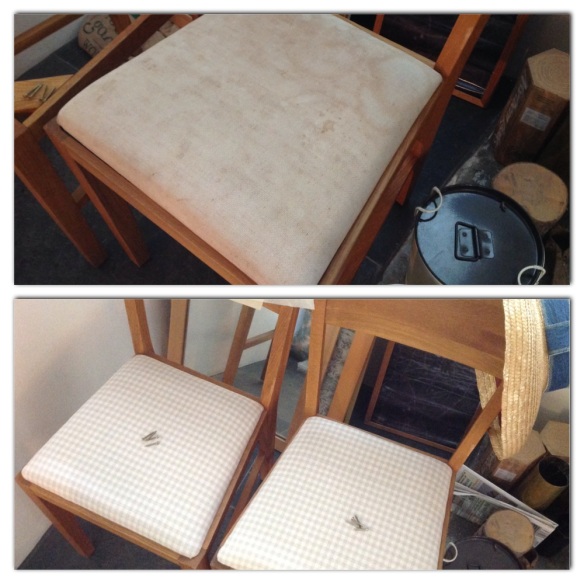



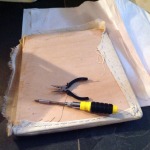
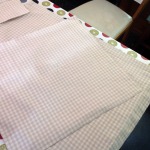




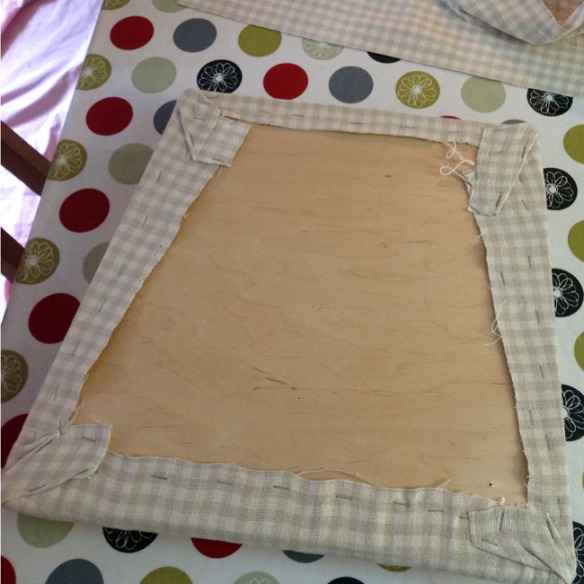




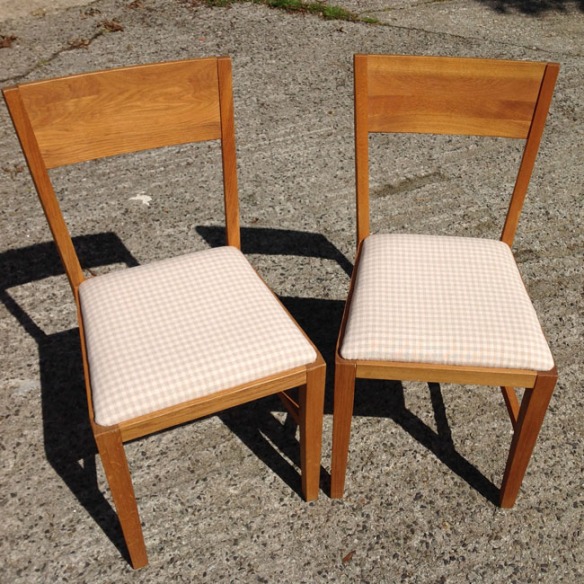



 Now, a little aside, if you don’t mind, about small quantities of cream. I’m always buying cream for this or that recipe, and then the rest goes off in the door of the fridge and eventually gets thrown away. But as it turns out, there’s an alternative. Take any surplus cream you have after cooking with it, and pour it into an ice cube bag (I prefer the bags for this to the open plastic trays, because the cream is fully sealed in them and can’t take on flavours).
Now, a little aside, if you don’t mind, about small quantities of cream. I’m always buying cream for this or that recipe, and then the rest goes off in the door of the fridge and eventually gets thrown away. But as it turns out, there’s an alternative. Take any surplus cream you have after cooking with it, and pour it into an ice cube bag (I prefer the bags for this to the open plastic trays, because the cream is fully sealed in them and can’t take on flavours). Tie the top securely, and freeze. My bags produce cream-cubes of almost exactly 15ml each, conveniently a tablespoon measure. Then, when you need a little bit of cream for a recipe – sauces like this one are a classic example – just take what you need out of the freezer. I don’t think it would whip-up properly after this treatment, but for this kind of use it’s perfect.
Tie the top securely, and freeze. My bags produce cream-cubes of almost exactly 15ml each, conveniently a tablespoon measure. Then, when you need a little bit of cream for a recipe – sauces like this one are a classic example – just take what you need out of the freezer. I don’t think it would whip-up properly after this treatment, but for this kind of use it’s perfect.



























